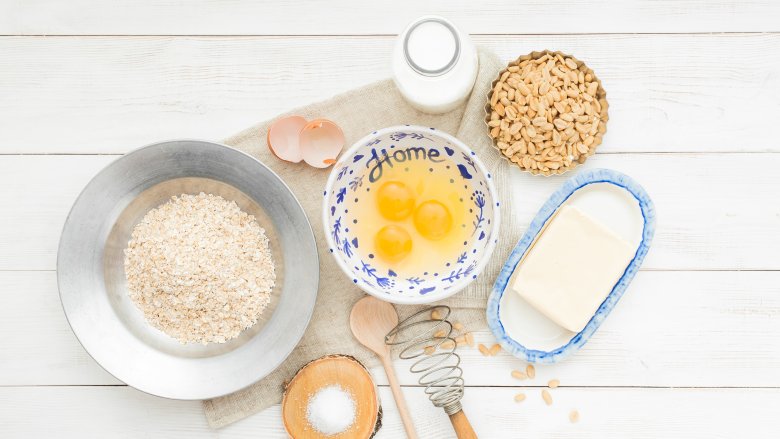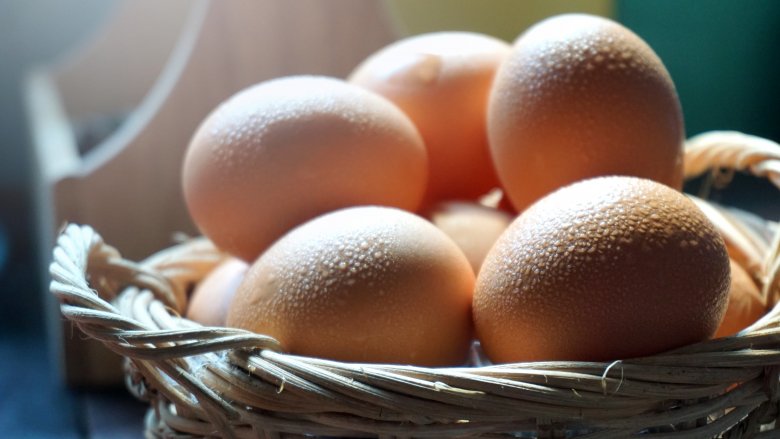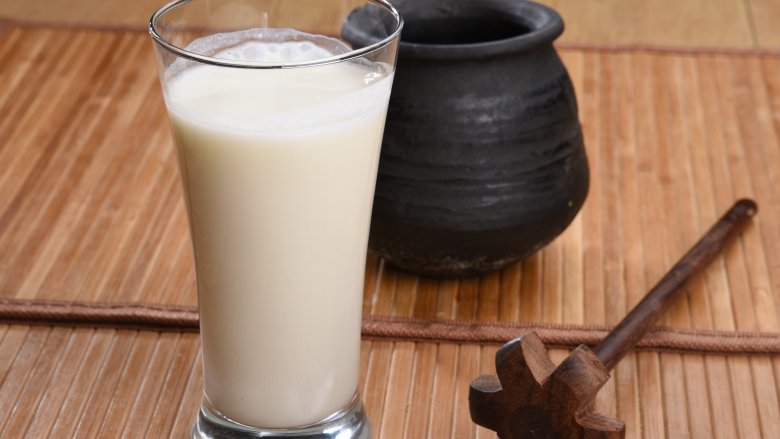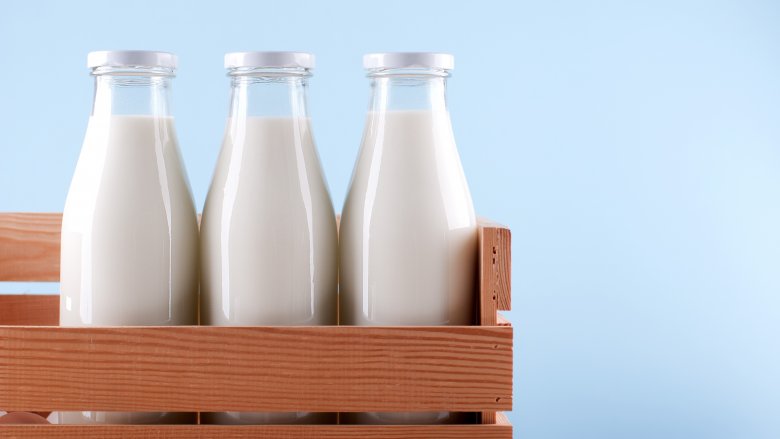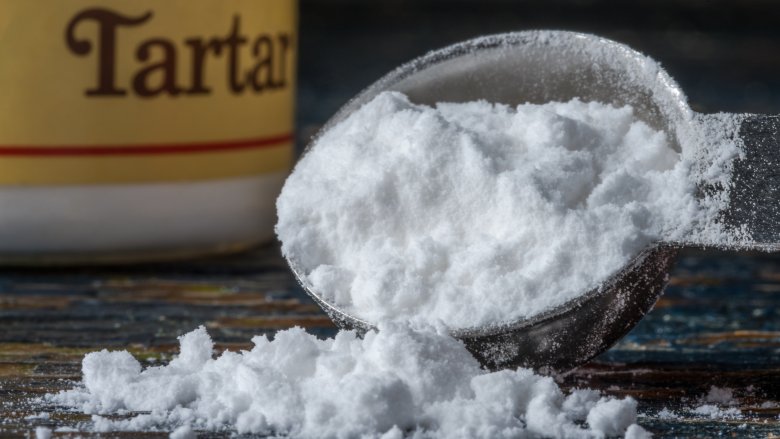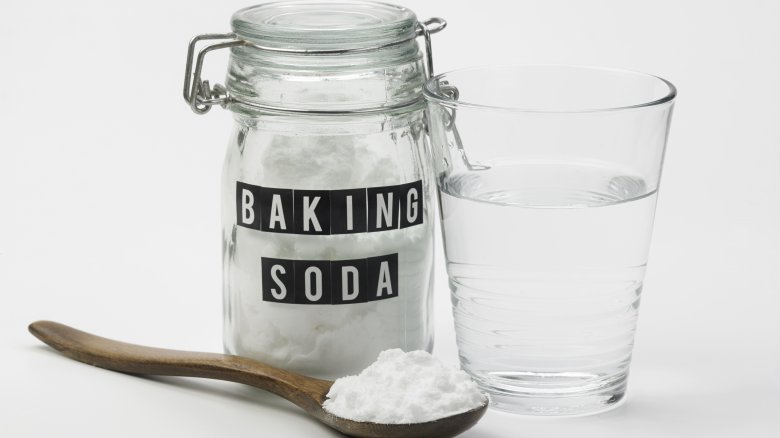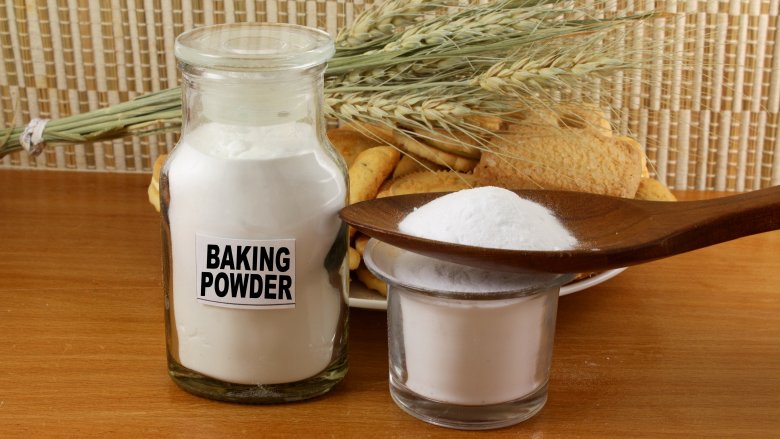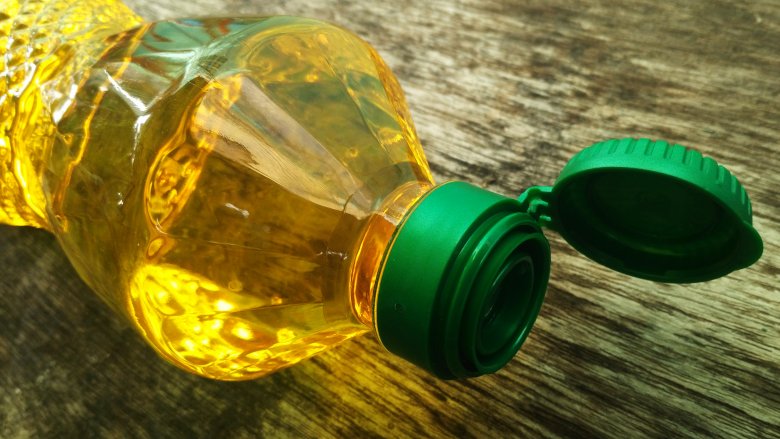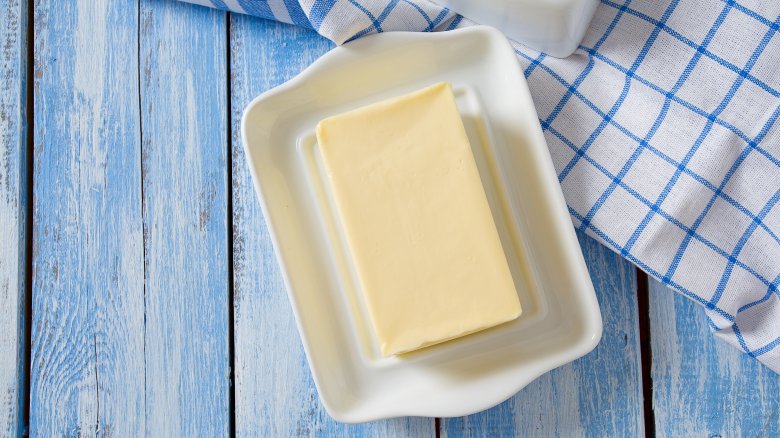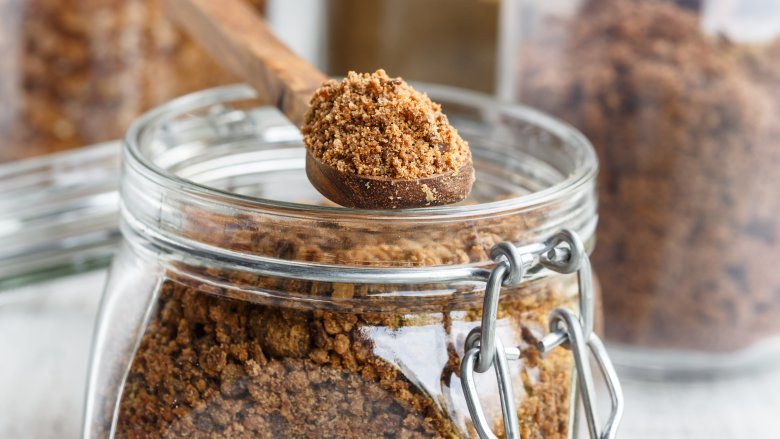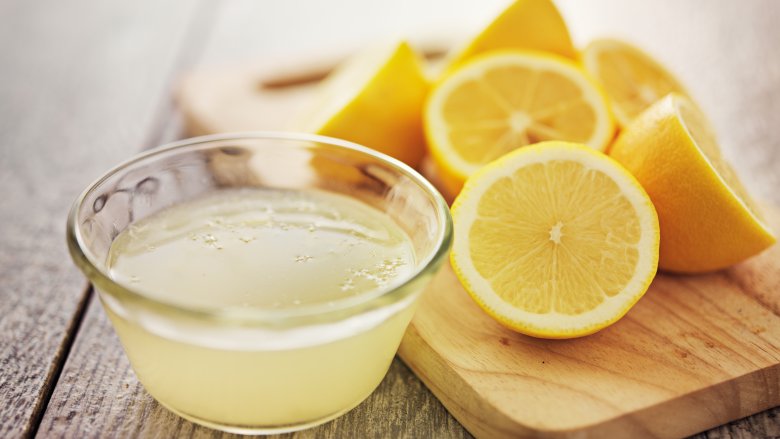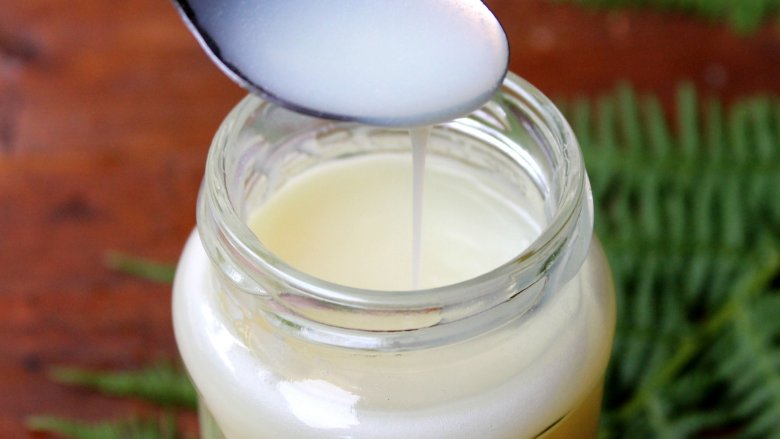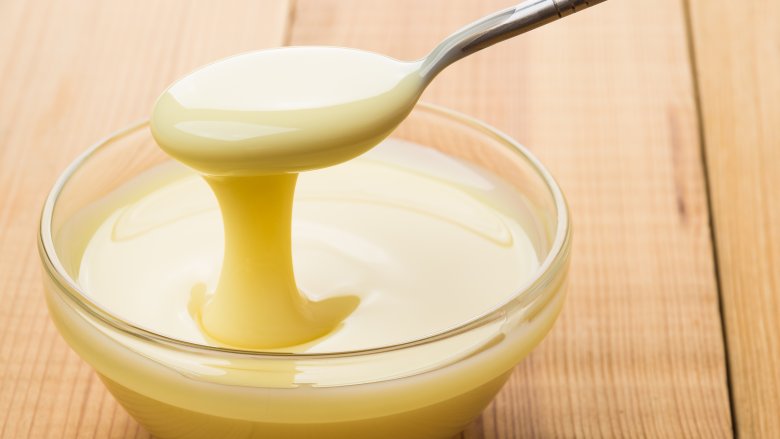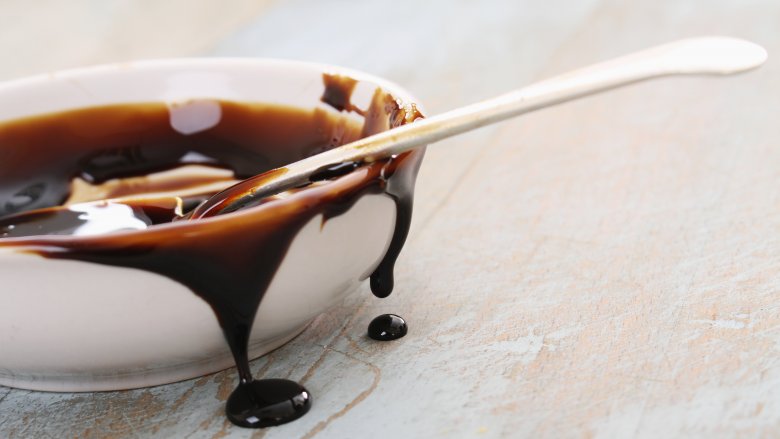Simple Substitutions You Can Make In A Baking Emergency
It happens to the best of us. We're in the middle of baking something amazing, and we realize we don't have has many eggs as we thought, the milk's gone bad, or the brown sugar has turned into an unusable mess. There's no time to run to the store in the middle of your project, but fortunately, there are some tried-and-true substitutions you can make to salvage almost any baking project.
First, a quick tip. Not all substitutions are created equal, so it's important to take into account what you're making. Replacing an egg with a banana will work better in some recipes than in others, so see what you're working with. If you're trying these replacements on old family favorites, you might notice a difference in taste and texture — but what comes out of the oven will still be tasty!
Eggs
Eggs are a crucial part of any recipe they're present in, and when you replace them, you need to substitute in something that can act as a leavening agent to help your final product rise, and as a binder that will help hold everything together. Swanson Health Products has a few handy swaps you can make, and we'll start with the straightforward ones. Replace every egg with 3 tablespoons of peanut butter, a quarter cup of unsweetened applesauce, or half of a mashed banana.
Buttermilk
You probably don't keep buttermilk in the fridge, but it's essential for some baked goods. There's no need to run out and get some, though, not when you can just add a tablespoon of white vinegar or lemon juice to one cup of milk and let it sit for about five minutes. You'll have acidified milk that's going to act the same way as buttermilk.
Epicurious has a couple other tricks, too. Whip some yogurt with either milk or water until it's the same consistency as buttermilk — you can do the same thing with sour cream and water, too. You'll never buy buttermilk again!
Milk
Milk is sneaky, and we all know how quickly it can turn sour. If you're caught in a pinch, there's a couple things you can do. Start by digging out that can of evaporated milk that's sitting in everyone's kitchen cupboard, and turning it into regular milk by mixing it with an equal amount of water. You can also make a straight swap with yogurt.
Sour cream can also be used as a 1:1 replacement, and Greek yogurt can be substituted in, too. You'll have to thin that with some water first, but it'll work just like milk. In a worst case scenario, add a cup of water with a tablespoon of butter for each cup of milk you're substituting. There will be some changes in the texture of your final product, but it's better than scrapping the whole thing!
Cream of tartar
Cream of tartar is nothing short of magic when it comes to the science of baking, and it's usually used when you need to keep something soft while it rises. What you're replacing it with depends on how you're using it in a recipe. If you're adding it to the mixing bowl with the rest of your ingredients, use a whole teaspoon of either lemon juice or white vinegar for every half teaspoon of cream of tartar the recipe calls for. If it's acting as an additive for whipping eggs, use half a teaspoon of lemon juice for every egg white.
There's another option, too, and this one works because baking is a science. If the recipe calls for an equal amount of both cream of tartar and baking soda, leave out both ingredients and substitute with baking powder. It'll taste and look a bit different, but it works particularly well with cookies.
Baking soda
Baking soda is used in a recipe to make things rise, and in order to get the right reaction, you'll see recipes that call for baking soda also use an acidic liquid, like honey or lemon juice. When you swap in something else for baking soda, you're actually replacing half of a chemical reaction.
You can actually replace any amount of baking soda with three times the amount of baking powder. If that seems like too much, you can also replace the baking soda with twice the amount of baking powder, and leave out any salt the recipe calls for. Substitutions might mean your final product isn't going to rise as much as you'd like, but you should still get a decent result.
Baking powder
Baking powder works in much the same way baking soda does, and there's a good reason for that: it's essentially baking soda with a dry, acidic ingredient already mixed in. While baking soda is activated by a wet, acidic ingredient, baking powder does the same thing with any moisture.
And knowing that, you might be able to guess how we're going to replace baking powder in a recipe. It's easy — mix cream of tartar (your dry, acidic ingredient) with baking soda in a ratio of 2:1. We told you it was easy!
Vegetable oil
You might be thinking about replacing the vegetable oil in your baked goodies even if you haven't run out of it. There are several great alternatives that work so well that not only will you not notice the difference, but your baked treats will get just a little bit healthier.
Applesauce is a versatile swap that works well in almost anything, and for every cup of oil the recipe calls for, use three-quarters of a cup of applesauce. You can also use Greek yogurt in the same ratio, and depending on what flavor yogurt you use, this can be a great way to give your muffins or brownies an amazing twist. If you use half a cup of yogurt, you can make up the rest with all the goodness of fresh avocado.
If you're making something like brownies, you can actually dig out a can of black beans, throw them in the food processor with a dollop of yogurt, and use the mashed beans as an exact substitute. Surprised? Try it, and you'll be even more surprised!
Butter
There's nothing better than a dessert that's filled with buttery goodness, but that stuff makes your favorites a guilty pleasure, too. Fortunately, you can replace the butter in most recipes with half the amount of apple sauce (either out of the jar, or make your own by microwaving a few apples then mashing them). You can also replace the butter with a half-applesauce, half-buttermilk mixture, but only in half the amount originally called for (if you're replacing a cup of butter, your applesauce-buttermilk mixture should be half a cup).
That same cup of butter can also be replaced with three-quarters of a cup of olive oil, prune puree, pumpkin puree, or vegetable oil. Use 1:1 replacements if you're using avocado or coconut oil, and these can be a great way to switch up an old family favorite to not only make it healthier, but into something completely new. Sometimes, running out of things can be a good thing!
Brown sugar
All the best cookies are made better by brown sugar, and substituting something else might seem unforgivable. But it's not, and this swap isn't really a swap — it's a recipe for making your own brown sugar.
The stuff out of the bag is just regular sugar with molasses added, so you can do the same thing at home and not notice there's anything different happening with your cookies. If you need light brown sugar, use a cup of white sugar and a tablespoon of molasses. If your recipe calls for dark brown sugar, just use two tablespoons. It's that easy, and if you don't have any molasses on hand, you can use maple syrup, rum flavoring, buckwheat honey, or agave nectar instead.
Lemon juice
Lemon juice has an unmistakable flavor, but it's surprisingly easy to find an appropriate substitution for. In many recipes, it's included as an activator for the leavening agents, so that means depending on what you're making, you can replace the dash of lemon juice your recipe calls for with an equal amount of something acidic. Use almost any kind of juice, like apple, orange, or lime. You can also use less fruity alternatives, like vinegar or white wine. A dash of acidic dairy is also a completely legitimate choice, and you can substitute in something like buttermilk or yogurt. Just replace the lemon juice with an equal amount of whatever you choose, and as long as you pick a substitute with a flavor profile that works with what you're making, you'll end up with another successful dessert.
Corn syrup
Corn syrup is another ingredient that you might just start replacing even if you have some in your cupboards and fortunately, it's easy to replace. When it's included in a recipe, it's usually there because of how it impacts texture. It makes things smoother, and it keeps sugar from crystallizing. That means you just need something that does the same thing, and agave nectar is a great substitution that also doesn't add any unwanted flavors.
You can also make cane syrup to replace corn syrup, and The Kitchn has an easy recipe for making your own — great in a pinch. Just mix water, cane sugar, cream of tartar, and a pinch of salt, and dissolve. You'll need a candy thermometer to get this one absolutely perfect, but if you're looking to get rid of corn syrup, it's worth making a jar to keep on hand.
Evaporated milk
Evaporated milk is exactly that — milk with some of the water content removed. Since it's so rich, it's the perfect ingredient for desserts like fudge and treats filled with caramel goodness. If you don't have any, you can definitely make your own by doing what commercial producers do — remove the water content from regular milk. Measure out twice the amount of regular milk as you need, and put it on the stove to boil. Stir constantly, and your milk will reduce by about half as it boils. It'll have a slightly brown appearance, and be the perfect substitute.
You can also mix half-and-half with regular milk in a 1:1 ratio, and you'll have a liquid that's going to do about the same thing evaporated milk would. And, for those who love the taste of almond milk or vanilla soy milk, you can substitute some of that in equal quantities, too — it might be just the thing your fudge calls for.
Condensed milk
Try a taste of condensed milk, and you'll find it's super sweet. That's because it's essentially evaporated milk with added sugar, and that means it's a little more complicated when it comes to finding a substitution.
Fortunately, it is possible, and Stay at Home Mum has a few recipes for whipping up a batch of imitation condensed milk, including a dairy-free version that's made with soy, almond, or oat milk, a lot of sugar, and a bit of cornflour. There's a sugar-free version, too, and a standard recipe that includes regular milk, brown sugar, eggs, and a bit of vanilla. That's a lot of choices, but whatever you have in your kitchen cupboards, there's something there that's bound to work for you.
Molasses
Molasses is one of those amazing ingredients you can taste no matter what it's in. It brings a whole new depth of flavor to whatever you're making, and if you run out, it might seem like it's the end of your baking session.
Not so fast! There are a couple of different options here, and you can definitely replace your molasses with an equal amount of either maple syrup, honey, or dark corn syrup. This is going to change the final taste of whatever you're making, so choose whichever one is going to work the best. You can also swap in brown sugar at a ratio of three-quarters of a cup for each cup of molasses, and you can also use three-quarters of a cup of white sugar and a quarter cup of water for each cup of molasses your recipe calls for.
That will definitely change your flavor, and you might not have to substitute at all. If your can of molasses is crystallized, it's not bad — just heat it in a pan, and you'll be good to go! Molasses can last for a few years in the cabinet, so this fix might be easier than you were expecting.
